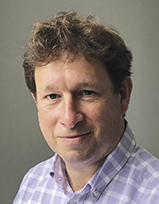On 3 May 1951, the Royal Festival Hall opened its doors to concert-goers for the first time, the showpiece building of that year's Festival of Britain. Since then, it has hosted many of the greatest names from the classical music world and, despite criticism of its acoustics (even after a refit in 2007), is a much loved part of the London concert scene. Composer and BBC Music Magazine writer Bayan Northcott was there to witness the venue's earliest days and has been enjoying concerts there for over 60 years. Here, he casts his mind back…
Trams still ran along the Victoria Embankment in 1950, and it was from the top of one of these that I first beheld the rising frame of the Royal Festival Hall. The following year, there it stood amidst all the other excitements of the Festival of Britain – the Skylon, the Dome of Discovery – seeming, amid the shabbiness of post-War London, to promise a shiny future of space-fiction modernity.
As an 11 year-old, I could have no inkling of what a feat it was, at a time of austerity, to raise this pioneering building in a mere 26 months. Nor, attending my first concert there in 1952 did I immediately identify its sonic limitations. Actually, the clear, dead acoustic was quite liked at the time. It seemed to accord with the clean ‘Contemporary’ look of the design and the dry sound of many of those early mono LPs that were just hitting the market.
Curiously, my most vivid youthful memories are visual: not least of sitting in one of those drawer-shaped boxes in 1955 and looking down at what appeared to be a large pudding in the middle of the stalls. It proved to be the white-shirted tummy of Ralph Vaughan Williams, there for the London premiere of his cantata Hodie. The following year Paul Hindemith, looking matter-of-fact as a bank manager, stoutly directed the Mozart Requiem during the decorous week of concerts that were then deemed quite sufficient to celebrate a bicentenary. Later I was to see the 60-year-old Aaron Copland leap a clear foot into the air as he lead the ‘Hoe-down’ from Rodeo in one of his marvellous annual LSO concerts.
And still they came. It is difficult now to imagine an avant-gardiste such as Stockhausen being given a pop-star’s welcome by a hall crammed with young people, but I saw it in the early 1970s. Then there was the aged Horowitz, allegedly drugged to the eyeballs against stage fright, but rippling out transcendental impossibilities with that strange flat finger action; and Leonard Bernstein virtually bringing Elgar’s ‘Nimrod’ to a standstill in his over-the-top awe. Though plans have been recently revealed for a new major concert hall in the capital, let us still hope that the RFH will prove worthy of music’s sacred monsters for decades to come.
